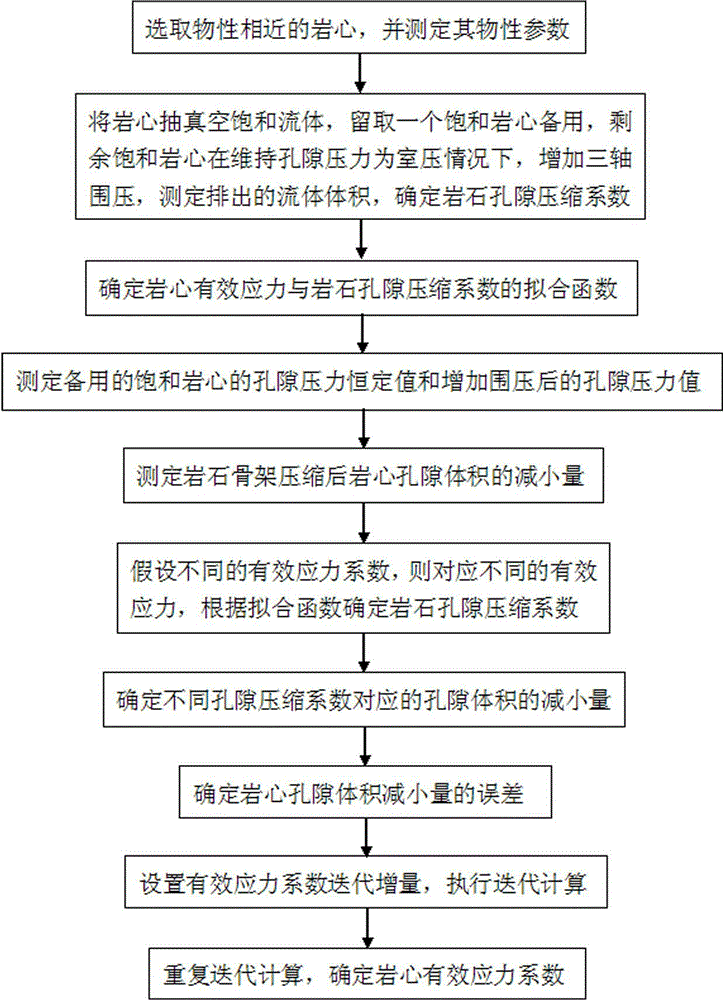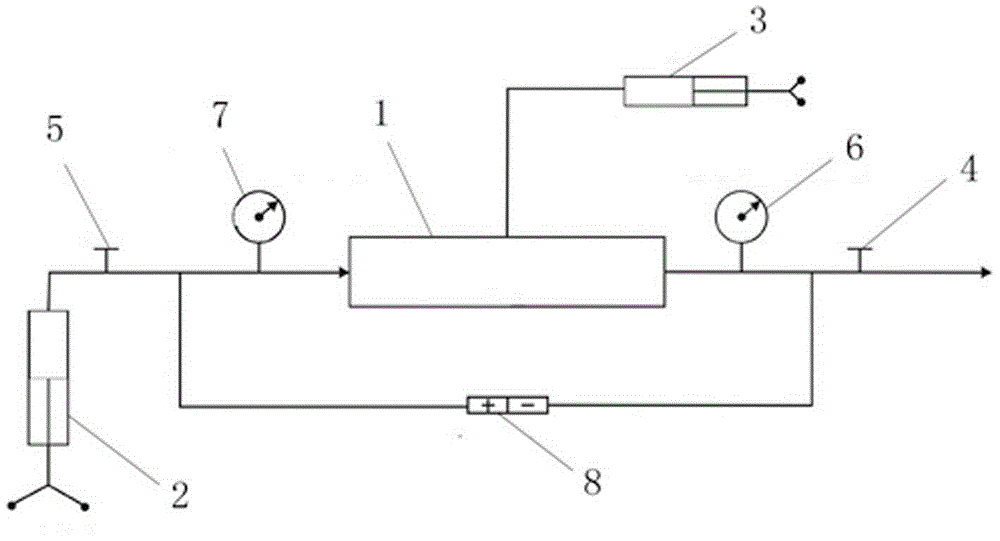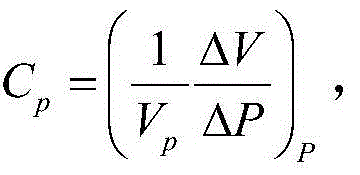Method for determining effective rock stress coefficient based on pore compression experiment
A technology of pore compressibility and effective stress, which is used in the application of stable tension/pressure to test the strength of materials, analysis of suspensions and porous materials, and measurement devices. The effect of simple test equipment, convenient technical solutions, and concise test methods
- Summary
- Abstract
- Description
- Claims
- Application Information
AI Technical Summary
Problems solved by technology
Method used
Image
Examples
Embodiment 1
[0055] like figure 1 As shown, a method for determining the effective stress coefficient of rock based on pore compression experiments includes the following steps in sequence:
[0056] (1) Select a low-permeability sandstone reservoir porous medium rock, select two cores with similar physical properties in the same direction of the rock, and test the basic physical parameters of the cores, as shown in Table 1.
[0057] Table 1: Basic physical parameters of the core
[0058] Core number
Length (cm)
diameter (cm)
Permeability (mD)
Gas porosity (%)
YWT-B1
6.138
3.775
0.1252
12.471
YWT-B2
6.162
3.772
0.1272
12.378
[0059] (2) Vacuum the core YWT-B1 and core YWT-B2, and then immerse them in standard brine to saturate the fluid. While maintaining the pore pressure at the room pressure, gradually increase the triaxial confining pressure on the core YWT-B1 to measure the pressurization The volume of stan...
Embodiment 2
[0085] like figure 1 As shown, a method for determining the effective stress coefficient of rock based on pore compression experiments includes the following steps in sequence:
[0086] (1) Select a low-permeability sandstone reservoir porous medium rock, select four cores with similar physical properties in the same direction of the rock, and test the basic physical parameters of the cores, as shown in Table 3.
[0087] Table 3: The basic physical parameters of the core
[0088] Core number
Length (cm)
diameter (cm)
Permeability (mD)
Gas porosity (%)
YWT-B1
6.138
3.775
0.1252
12.471
YWT-B2
6.176
3.772
0.1797
11.347
YWT-B3
6.180
3.770
0.1133
12.257
YWT-B4
6.162
3.772
0.1272
12.378
[0089] (2) Vacuumize the four rock cores in step (1), and then immerse them in standard brine to saturate the fluid. Under the condition that the pore pressure is maintained ...
Embodiment 3
[0103] like figure 1 As shown, a method for determining the effective stress coefficient of rock based on pore compression experiments includes the following steps in sequence:
[0104] (1) Select a low-permeability sandstone reservoir porous medium rock, select four cores with similar physical properties in the same direction of the rock, and test the basic physical parameters of the cores, as shown in Table 5.
[0105] Table 5: The basic physical parameters of the core
[0106] Core number
Length (cm)
diameter (cm)
Permeability (mD)
Gas porosity (%)
YWT-B1
6.138
3.775
0.1252
12.471
YWT-B2
6.176
3.772
0.1797
11.347
YWT-B3
6.180
3.770
0.1133
12.257
YWT-B4
6.162
3.772
0.1272
12.378
[0107] (2) Vacuumize the four rock cores in step (1), and then immerse them in standard brine to saturate the fluid. Under the condition that the pore pressure is maintained ...
PUM
| Property | Measurement | Unit |
|---|---|---|
| compressibility factor | aaaaa | aaaaa |
Abstract
Description
Claims
Application Information
 Login to View More
Login to View More - R&D
- Intellectual Property
- Life Sciences
- Materials
- Tech Scout
- Unparalleled Data Quality
- Higher Quality Content
- 60% Fewer Hallucinations
Browse by: Latest US Patents, China's latest patents, Technical Efficacy Thesaurus, Application Domain, Technology Topic, Popular Technical Reports.
© 2025 PatSnap. All rights reserved.Legal|Privacy policy|Modern Slavery Act Transparency Statement|Sitemap|About US| Contact US: help@patsnap.com



